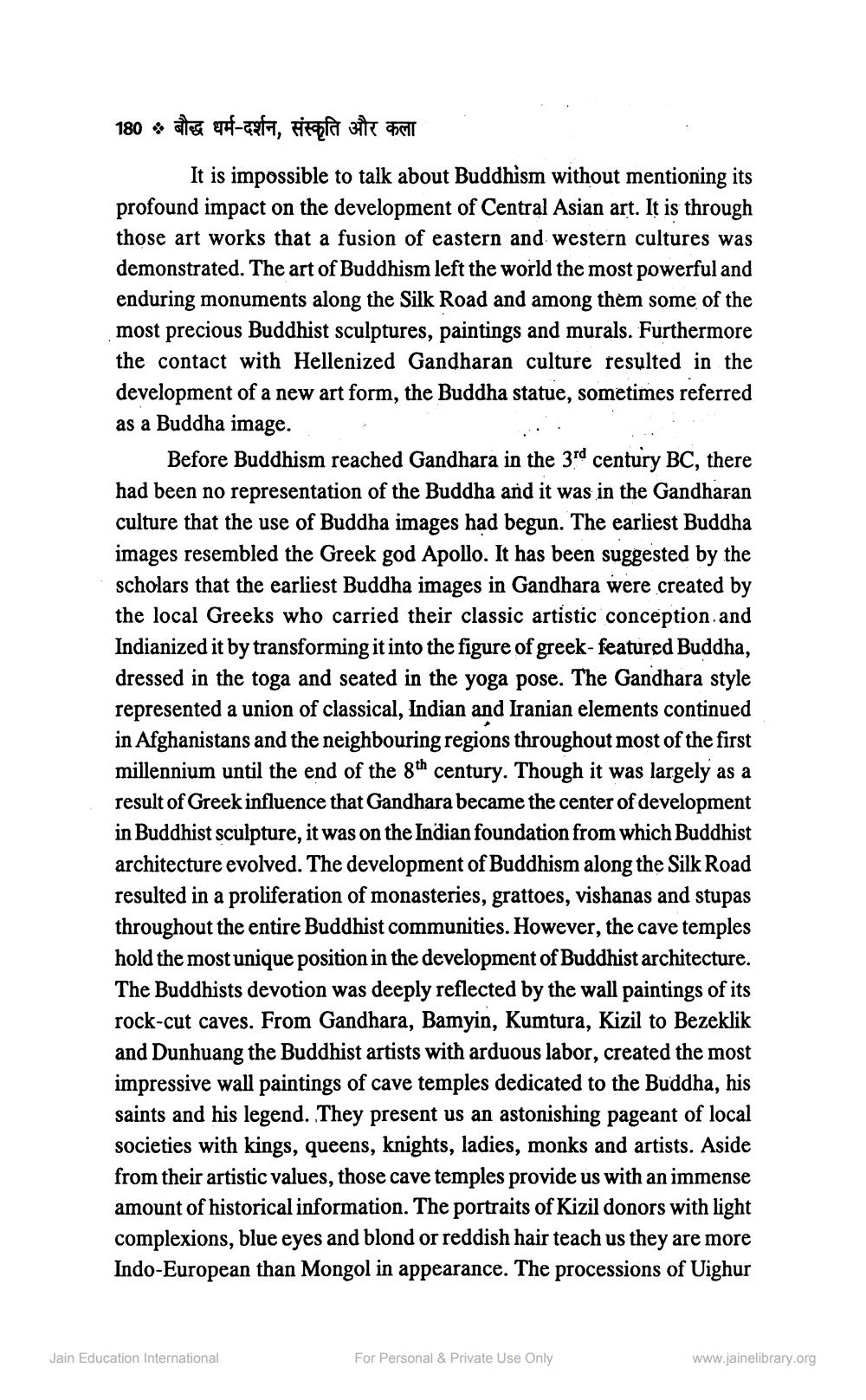________________
180
alles
t-axta, hitta site hell
It is impossible to talk about Buddhism without mentioning its profound impact on the development of Central Asian art. It is through those art works that a fusion of eastern and western cultures was demonstrated. The art of Buddhism left the world the most powerful and enduring monuments along the Silk Road and among them some of the most precious Buddhist sculptures, paintings and murals. Furthermore the contact with Hellenized Gandharan culture resulted in the development of a new art form, the Buddha statue, sometimes referred as a Buddha image.
Before Buddhism reached Gandhara in the 3rd century BC, there had been no representation of the Buddha and it was in the Gandharan culture that the use of Buddha images had begun. The earliest Buddha images resembled the Greek god Apollo. It has been suggested by the scholars that the earliest Buddha images in Gandhara were created by the local Greeks who carried their classic artistic conception and Indianized it by transforming it into the figure of greek-featured Buddha, dressed in the toga and seated in the yoga pose. The Gandhara style represented a union of classical, Indian and Iranian elements continued in Afghanistans and the neighbouring regions throughout most of the first millennium until the end of the 8th century. Though it was largely as a result of Greek influence that Gandhara became the center of development in Buddhist sculpture, it was on the Indian foundation from which Buddhist architecture evolved. The development of Buddhism along the Silk Road resulted in a proliferation of monasteries, grattoes, vishanas and stupas throughout the entire Buddhist communities. However, the cave temples hold the most unique position in the development of Buddhist architecture. The Buddhists devotion was deeply reflected by the wall paintings of its rock-cut caves. From Gandhara, Bamyin, Kumtura, Kizil to Bezeklik and Dunhuang the Buddhist artists with arduous labor, created the most impressive wall paintings of cave temples dedicated to the Buddha, his saints and his legend. They present us an astonishing pageant of local societies with kings, queens, knights, ladies, monks and artists. Aside from their artistic values, those cave temples provide us with an immense amount of historical information. The portraits of Kizil donors with light complexions, blue eyes and blond or reddish hair teach us they are more Indo-European than Mongol in appearance. The processions of Uighur
Jain Education International
For Personal & Private Use Only
www.jainelibrary.org




